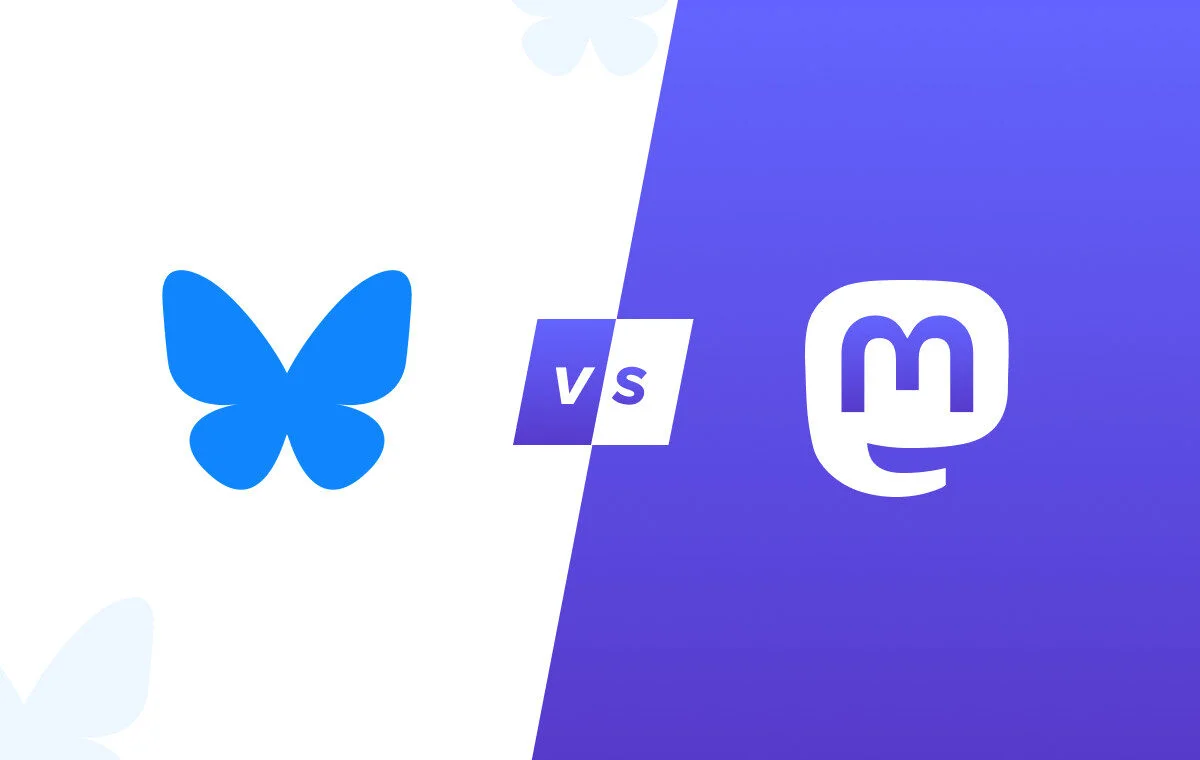Mastodon and Bluesky are gaining some serious traction. Users are increasingly drawn to platforms that prioritize privacy, transparency, and community control.
And when users switch platforms, businesses need to do the same. However, when it comes to Bluesky vs. Mastodon, businesses are confused about which to choose between the two.
Both platforms have a fresh, decentralized approach to social networking, but take different approaches. Bluesky is more like Twitter and offers customizable feeds in a unified platform. Mastodon has a network of independent communities.
This guide breaks down the key differences between Mastodon and Bluesky and helps you explore the best use cases for each. Let’s start with the basics.
What Is Bluesky?
Bluesky is a decentralized social media platform that gives users more control over their online experience. It was created as an alternative to traditional social networks like Twitter (now X).
Unlike mainstream platforms, Bluesky lets users choose their algorithms, customize their feeds, and make other customizations.
The platform is gaining popularity as more people look for alternatives to X. Many people see it as a fresh alternative to Twitter, offering a more open and community-driven space for conversations without corporate interference.
Businesses that join the platform early will have an advantage over competitors. The platform has a significant user base but is not yet oversaturated.
What Is Mastodon?
Mastodon is a decentralized, open-source social network that works like Twitter (X) but gives users more control over their experience. It operates as part of a larger network of interconnected servers called the Fediverse. Each server is called an Instance.
Users can join different communities, or “instances,” tailored to their interests and values. Businesses can join these to reach a niche audience. A host maintains each instance and has access to your information.
The platform feels more community-driven and less commercial. This, in turn, creates a friendlier and more respectful atmosphere. Moderators enforce guidelines that promote positive interactions, making it refreshing compared to mainstream social media.
The Key Differences Between Bluesky vs. Mastodon
Before we get into a detailed comparison, here’s a quick overview and comparison of both platforms for your reference:
| Bluesky | Mastodon | |
| Launch year | 2023 | 2016 |
| Protocol | AT Protocol | ActivityPub |
| User base | 35 million | 12 million |
| Structure | Unified platform | Federated network of independent servers (instances) |
| Moderation | Centralized moderation | Server-level moderation |
| Content features | Likes, reposts, repliesNo polls or content warnings | Favorites, boosts, polls, and content warnings |
| Character limits for each post | 300 characters | 500 characters |
| Audience | Users seeking a Twitter-like experience with more control over data and algorithms | Users interested in niche communities and a decentralized social networking experience |
Now, let’s compare Bluesky vs. Mastodon for each aspect one by one.
1. Community and User Base
Bluesky’s User Base
Bluesky started as an invite-only platform with a smaller and more controlled user base. However, it became open to the public in February 2024 and has gained a massive user base since then.
As of March 2025, Bluesky had almost 33 million registered users.
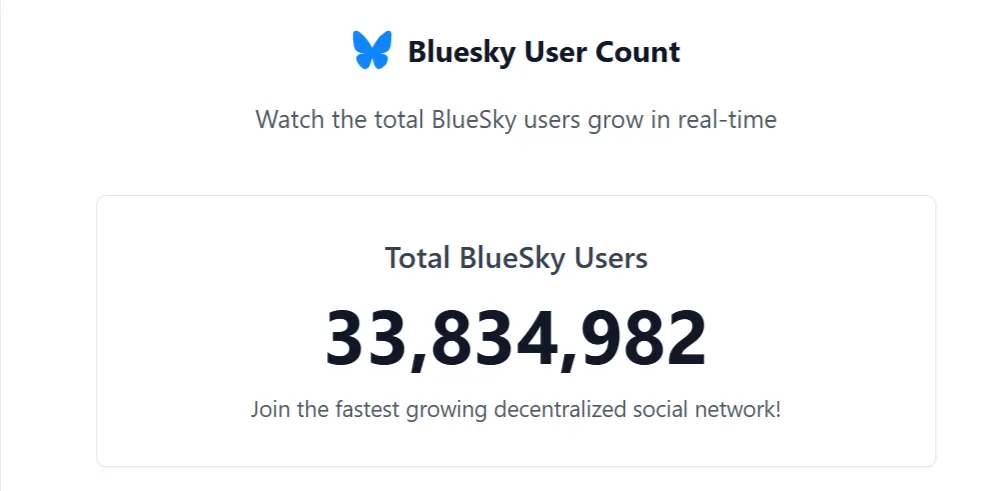
It has attracted many ex-Twitter users who want a decentralized platform, but a familiar experience.
A majority of Bluesky’s users are between 18 and 24 years old, suggesting that it’s a preferred choice for younger users. Over 60% of the users are male.
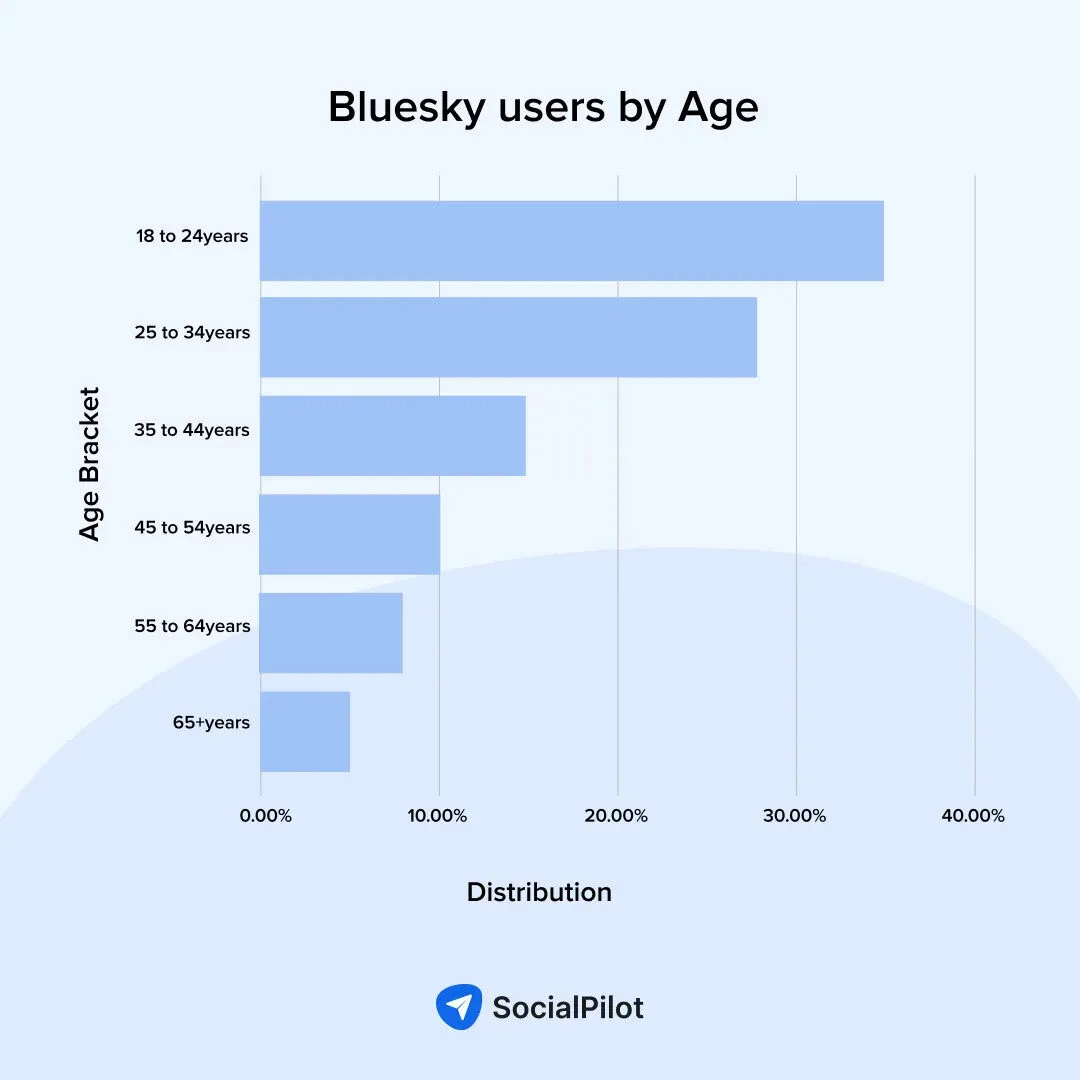
Mastodon’s User Base
Mastodon has been around since 2016 and saw a massive spike in users after Twitter’s changes under Elon Musk. It has a large, diverse community spread across thousands of independent servers. There are almost 10 million registered users on the platform.
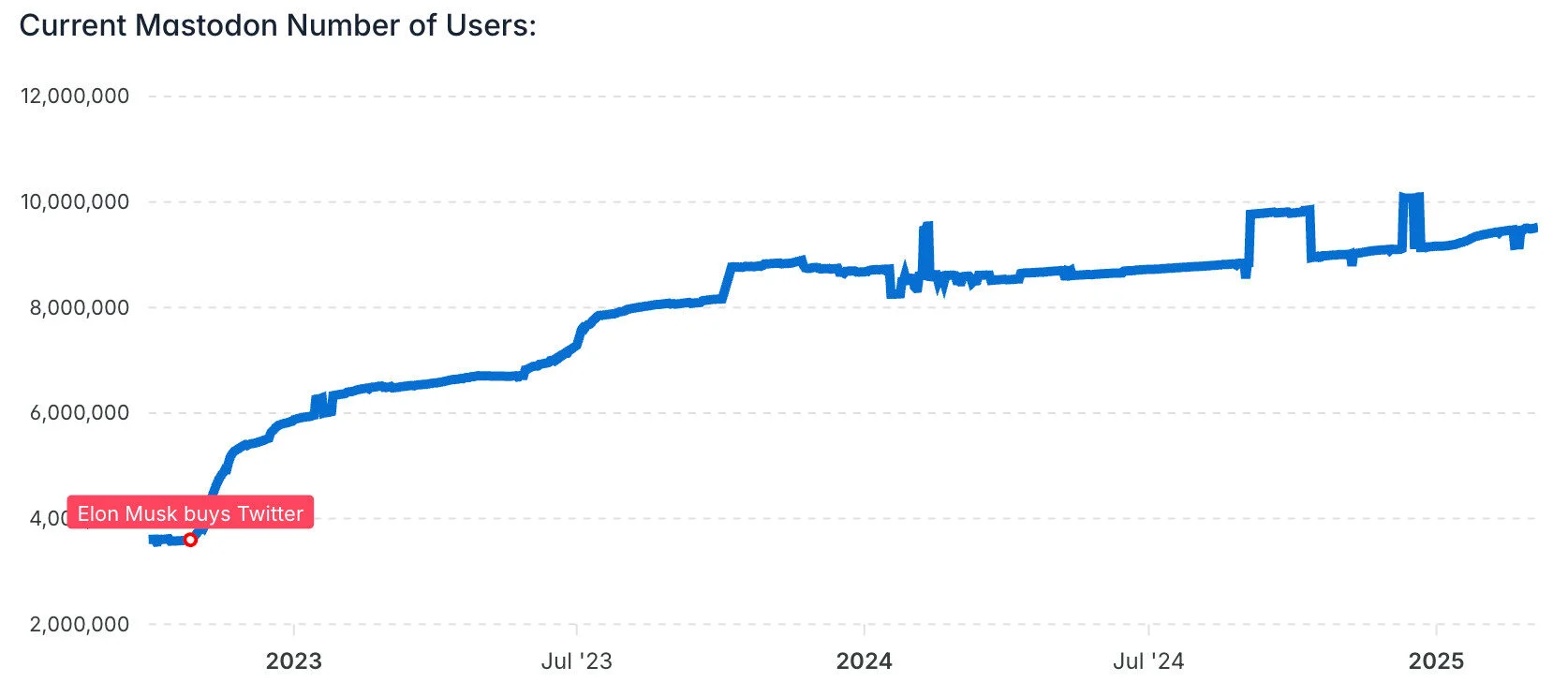
Though the user base is diverse across instances, there are like-minded people within each instance. Businesses can join niche-specific instances to reach targeted audiences.
Key Takeaways for Businesses
Mastodon has a diverse user base across instances, but since Bluesky became an open platform in 2024, its user base has grown more than Mastodon’s.
The thing businesses need to consider is whether they want to reach a niche but small audience base on Mastodon or a broader community on Bluesky.
2. Post Types
Bluesky Post Types
Bluesky focuses on text-based posts and supports images, links, etc. This makes it ideal for brands that rely on concise messaging and quick updates. Its interface is like that of Twitter (now X), making it easy for businesses to adapt.
Initially, it didn’t support video content. But, since September 2024, it has allowed users to post 1 video (up to 60 seconds long) per post. It allows users to upload up to 25 videos (up to 10 GB) per day.
The developers are expanding Bluesky’s capabilities, so you may see it support more content types in the future.
As a brand owner or promoter, you can share thought leadership posts, brand announcements, and more on the platform.
Mastodon Post Types
Mastodon supports a wider range of post formats than Bluesky. On Mastodon, you can share text-based posts, images, audio, GIFs, videos, and even polls.
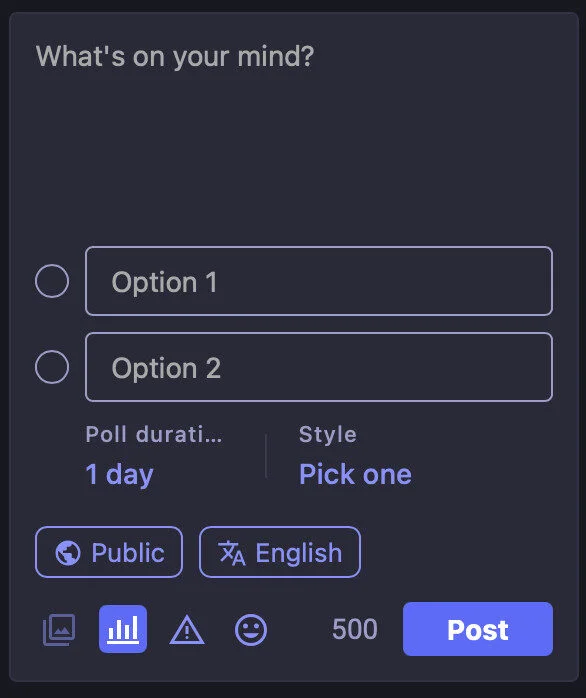
Similar to Bluesky, Mastodon allows one video per post, up to 99 MB in size. Users can also add audio files in multiple formats and add attachments to posts. For brand promotions that involve multimedia content, such as product demo videos or behind-the-scenes videos, you will find this platform useful.
It supports content warnings for sensitive material, giving users more control over what they see. You can apply content warnings to posts that might not be suitable for all audiences.
Mastodon also lets you choose whether or not to share your content publicly. You can limit your post to followers or show it to specific server instances. This gives brands more control over audience targeting for personalized campaigns.
Key Takeaways for Businesses
Mastodon offers more variety in post types, including polls and content warnings. Bluesky, while still evolving, offers basic post types, though it has started to add more content formats in recent years. If multimedia and content control are important to you, choose Mastodon.
3. Character Limits
Bluesky
Bluesky allows users to post up to 300 characters per post. This is slightly higher than X’s 280-character limit, but it still encourages short, concise conversations.
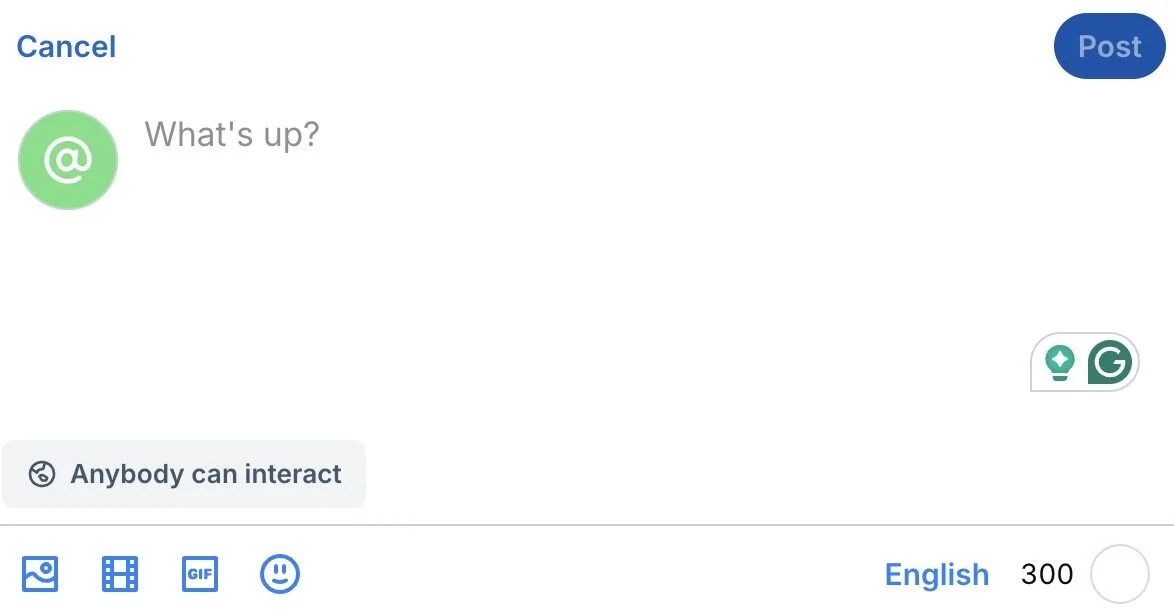
What businesses should consider:
- Bite-sized communication
- Brand awareness through brief interactions
- Focus on simplicity
Bluesky is great for brands that prefer quick interactions rather than long-form discussions.
Mastodon
Mastodon’s default character limit is 500 characters, but the platform uses many independent servers (called instances) that have their own set of rules. Some servers allow users to create posts with higher character limits, so users can have more detailed discussions.
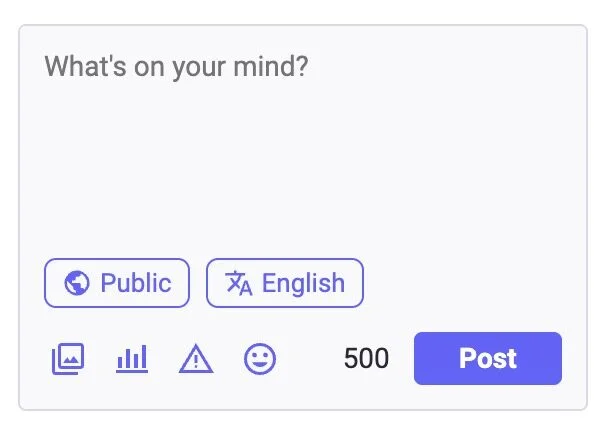
Mastodon is great for brands that want to have more in-depth conversations while keeping posts digestible for readers.
What businesses should consider:
- More space for thoughtful communication
- Customizable posting limits
- Better content structure and flexibility due to a higher character limit
Key Takeaways for Businesses
If you prefer concise, Twitter-style updates, Bluesky is a great fit. It keeps posts short and impactful, making it ideal for quick business updates and brand interactions.
Mastodon is great for storytelling or detailed explanations. Businesses can choose an instance with a higher character limit to match their content strategy.
4. Platform Structure
Bluesky
Bluesky is a single, unified platform, so all users interact within the same digital space. Despite decentralization, it still feels like a traditional social media platform.
Here are some reasons why businesses may choose Bluesky:
- Consistent user experience: All interactions happen within the same environment. So, businesses don’t have to worry about selecting the right server or navigating different rules across communities.
- Easier content management: There is no need to manage many instances or adjust messaging for different servers. Businesses can focus on a streamlined social media strategy.
- Customization potential: While Bluesky is uniform, its AT Protocol allows for future expansion. This could include custom feeds, better moderation tools, and content filtering. These are features that could make brand management even more effective.
Mastodon
Mastodon is a federated platform, which means it consists of many independent servers (instances). Each instance has its own rules, moderation policies, and communities. Some instances focus on specific topics, while others cater to general audiences.
As of February 2025, Mastodon had over 8,700 different servers or instances.
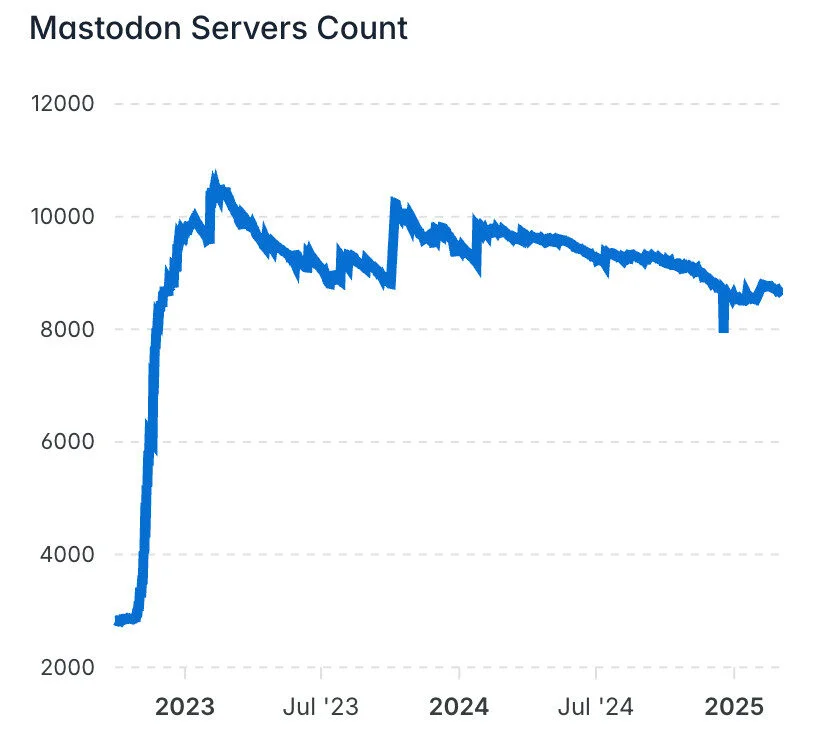
This structure gives users more control over their social media experience. It can also be overwhelming for beginners, as choosing the right instance requires research.
Here are some reasons why businesses may choose Mastodon:
- More control over brand presence: Companies can either join a relevant instance or create their own. The latter will allow full control over moderation and community engagement.
- Niche audience targeting: Some Mastodon instances focus on specific industries or topics. This makes it easier for businesses to connect with niche audiences instead of sharing messages with a broad audience.
- Flexible content policies: Unlike Bluesky, Mastodon allows each instance to set its own rules. As such, businesses can find (or create) an environment that best fits their engagement strategy.
Key Takeaways for Businesses
Bluesky offers a more unified experience, making it easier to use. Mastodon’s federated model provides more customization but has a learning curve. If you want simplicity, Bluesky is the better choice. If you value control and customization, Mastodon wins.
5. Customization and Algorithm Control
Bluesky’s Customization Options
Bluesky allows users to customize their content experience through algorithmic feeds.
Users can choose from different feed styles instead of relying on a single algorithm controlled by the platform. These feeds rank content based on various factors, such as trending topics, recent posts, or engagement levels.
Here’s a snapshot of the feed customization options that Bluesky provides.
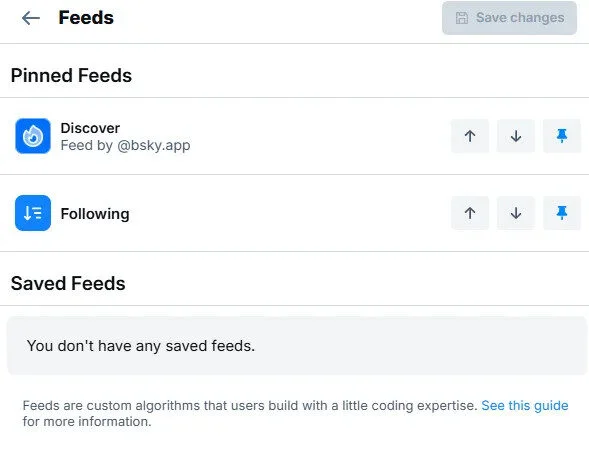
The result is that users can curate their timelines to match their interests without being locked into a system that dictates what they see.
Here’s a snapshot of a user feed on Bluesky:
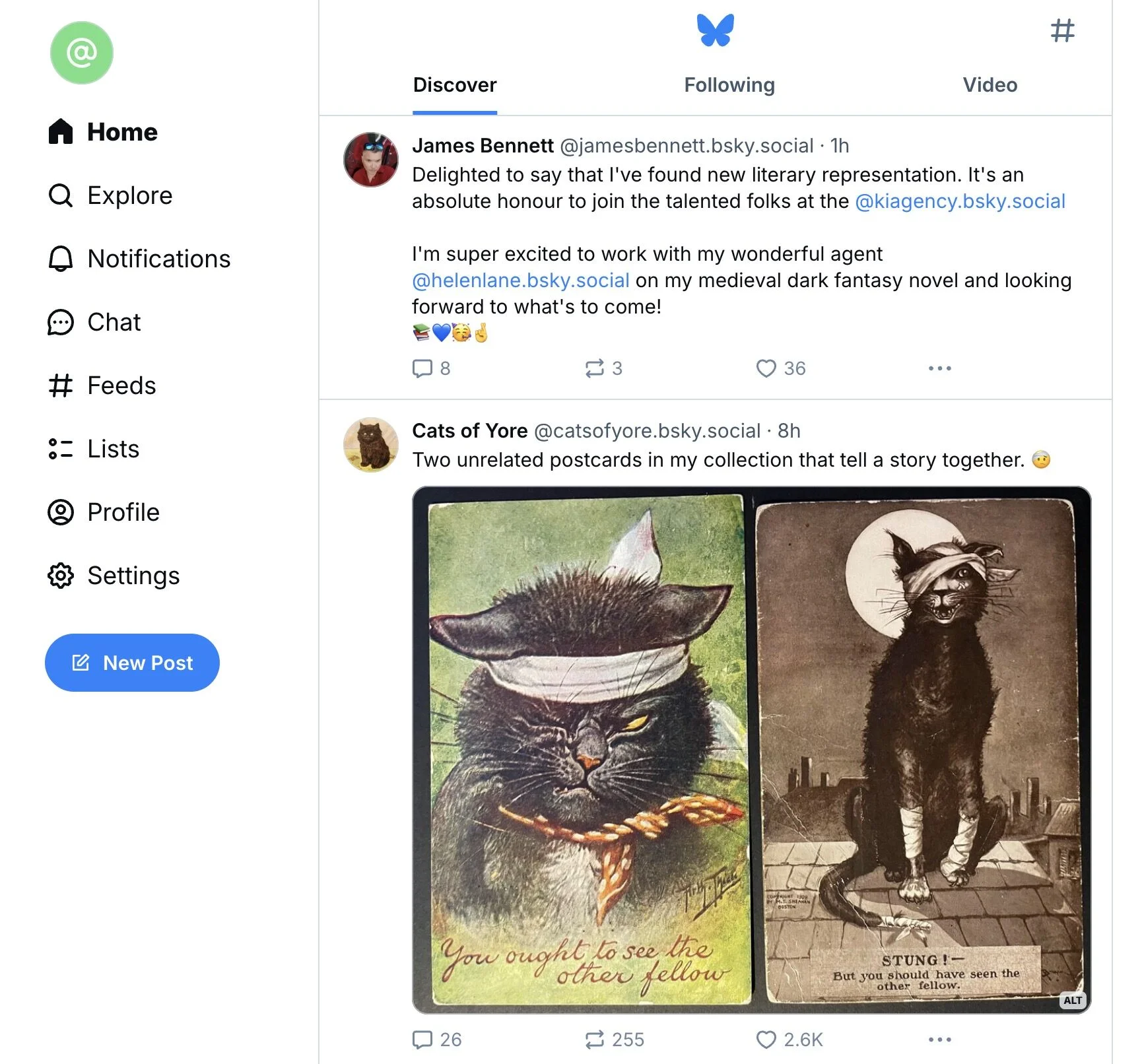
How does this customization option in Bluesky affect businesses?
Businesses can optimize their posts for specific algorithmic feeds. This can ensure their content appears in relevant feeds. In the future, there may be more customizable feed options to fine-tune their content distribution.
Mastodon’s Customization Options
Mastodon takes a completely different approach by avoiding algorithms altogether. It doesn’t rank posts based on engagement, relevance, or popularity. Instead, it displays everything in chronological order.
As such, the newest posts always appear first, and users won’t see content getting pushed to the top because of likes or shares. Even the Explore tab has posts listed in chronological order.

With no algorithm deciding what’s important, users control their experience. They can choose who to follow, which hashtags to track, and which instance to join.
This creates a raw, unfiltered timeline where every post has an equal chance of being seen. If users want more control over the content they engage with, they’ll need to follow specific accounts and communities.
One advantage for businesses is that posts do not get boosted based on engagement, so everyone gets a level playing field.
Any business that posts frequently enough will reach its intended audience without worrying about the platform’s algorithm penalizing its content because of low engagement.
Key Takeaways for Businesses
Bluesky offers more flexibility with feeds, while Mastodon sticks to a chronological timeline. If you like personalized feeds, Bluesky is better. If you prefer raw, unfiltered content, Mastodon is the way to go.
6. Content Moderation
Bluesky’s Content Moderation
Bluesky has a flexible content moderation framework that lets users customize content filters.
One of Bluesky’s main goals is to give users control over their content experience. Instead of a “one-size-fits-all” moderation system, it lets users adjust their moderation settings.
Currently, users can filter specific types of content, block certain accounts, and more.
Here are some options that are currently available.
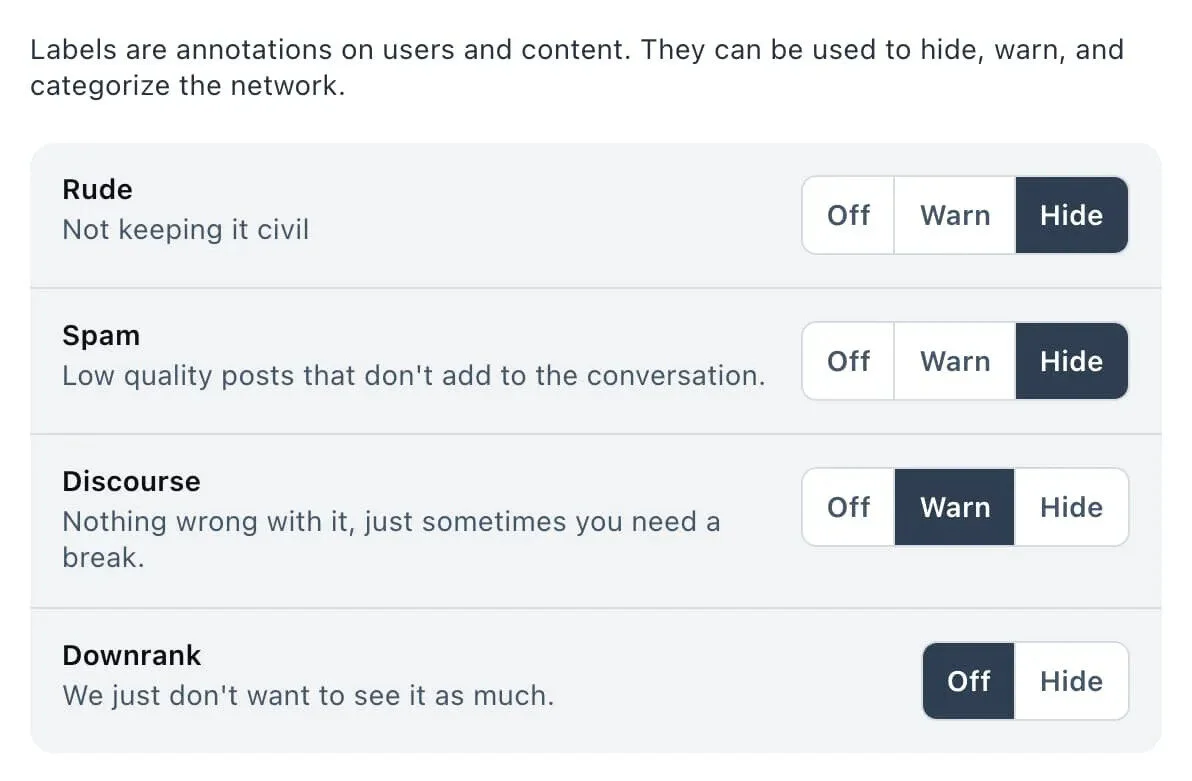
Mastodon’s Content Moderation
Mastodon takes a completely decentralized approach to content moderation. Instead of having one set of platform-wide rules, each Mastodon server (or instance) sets its own moderation policies.
One drawback of this system is that the moderation experience varies depending on which instance you join. For example, some servers have strict rules and moderate content, while others take a more hands-off approach.
Server admins handle moderation, such as removing harmful posts or banning users.
If you join a well-moderated instance, you might have a great experience. If you join an instance with lax moderation, you may need to block or mute problematic content.
Does this mean users have no control over the content they see? Well, no.
You can filter content with specific phrases and mute or block certain accounts. Here’s a screenshot of its dashboard where you can add content filters.
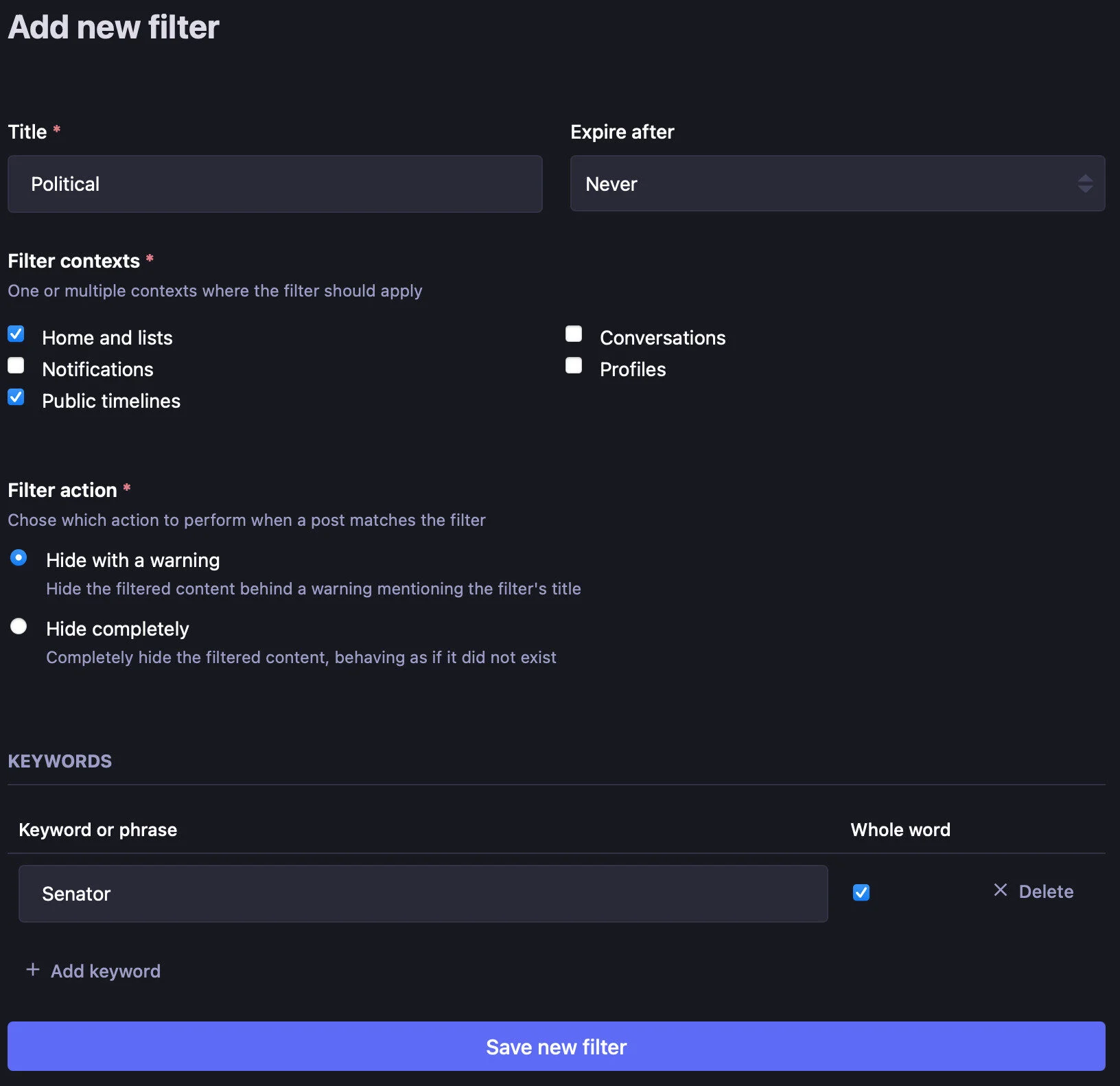
Businesses need to do research before selecting an instance with a well-moderated environment. They can also start their instances with complete control over content moderation.
Key Takeaways for Businesses
Bluesky allows users to filter and customize their content experience. But at a broader level, a centralized team handles content moderation.
Mastodon relies on server administrators to enforce rules. As such, users may have different moderation experiences across instances. Businesses can either join a well-moderated instance or create one themselves.
Bluesky vs. Mastodon: Which Platform is Better for You?
If you’re trying to decide between Bluesky vs. Mastodon, the right choice depends on what you’re looking for in a social media platform.
Both offer decentralization and an alternative to mainstream social networks. They follow different approaches to achieve this.
There’s no single “winner” here—the best platform for you depends on your preferences. Let’s break it down.
Choose Bluesky if you want:
- A familiar, unified experience like Twitter which makes it easy for your team to adapt.
- A platform where a complex algorithm doesn’t hurt your content visibility.
- A structured moderation system that helps maintain a professional and brand-safe environment.
- A single ecosystem where managing your posts and communications is simple.
- A platform that is evolving, promising even more customizable features in the future.
Choose Mastodon if you want:
- A decentralized model that lets you join independent servers tailored to your industry.
- A chronological feed that shows posts without algorithmic filtering.
- The flexibility to select a community (instance) with the right moderation policies for your brand.
- Greater control over content visibility by joining niche servers relevant to your business.
- An environment where community-driven moderation creates diverse interactions.
Ultimately, the best platform for your business depends on your priorities. If you value a consistent, customizable experience with built-in moderation, Bluesky is a good fit. If you prefer a community-driven space with more control over the content, consider Mastodon.
Conclusion
Choosing between Mastodon or Bluesky comes down to what matters most to you. If your team is familiar with marketing on X, switching to Bluesky will be easier for your business. If you’re tired of social media algorithms that never work in your favor and want a fair system where your content can shine, choose Mastodon.
When comparing Bluesky vs. Mastodon, we found that both are great alternatives to mainstream social networks. The best way to decide is to try them yourself.
No matter which platform you choose, managing your social presence efficiently is key. That’s where SocialPilot comes in — it helps you schedule posts, track engagement, and manage multiple accounts in one place.
Whether you’re growing your audience on Bluesky or Mastodon, SocialPilot can help. It makes social media management effortless. Try it for free for 14 days to see if it suits your needs.
